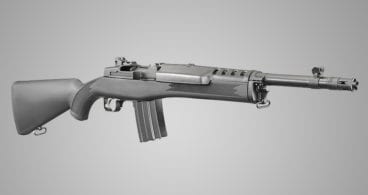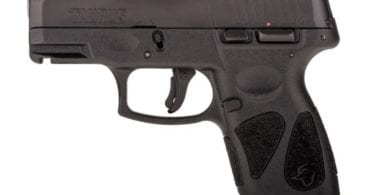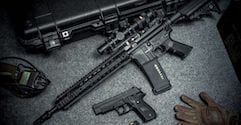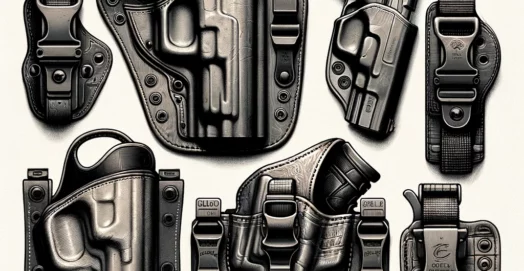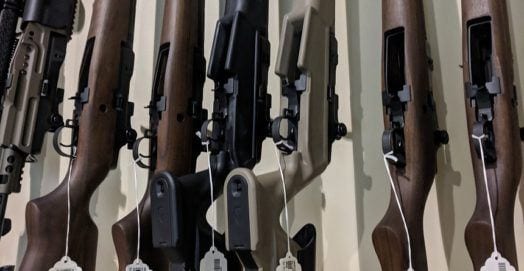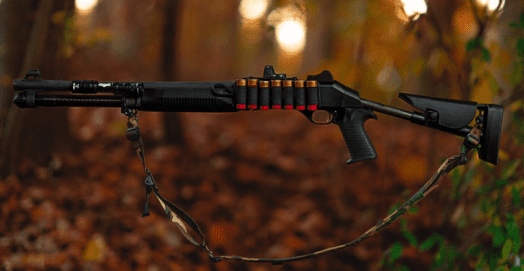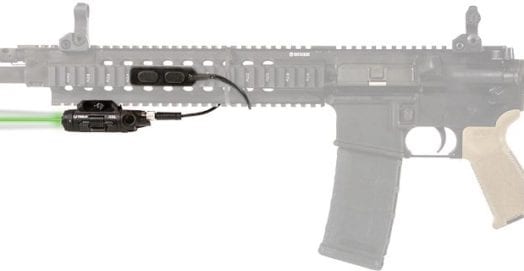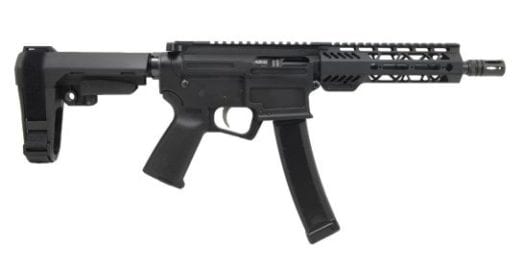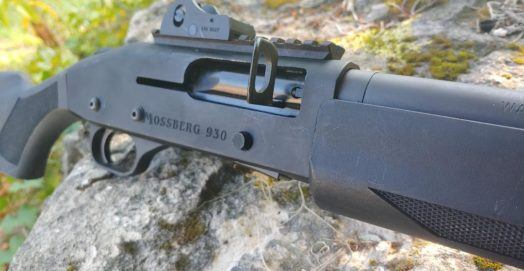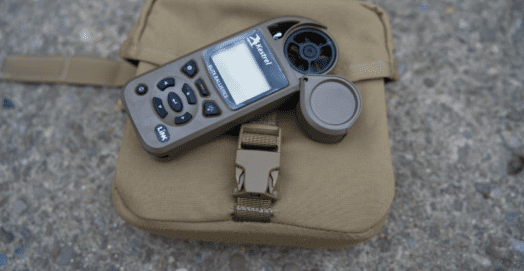Review of the .300 Winchester Mag: Best Rifles, Ammo and Uses

There are few cartridges more versatile than the .300 Win Mag. It is effective at everything from long range precision shooting to close-range dangerous game hunting. It has brought down most game animals on the planet, won multiple national precision rifle matches, and has been fielded by several militaries in sniper platforms.
It offers some pretty impressive terminal ballistics, making it incredibly popular with hunters, and it has great long-range potential
That all being said, the .300 Win Mag is over a half-century old which has many shooters wondering if this venerable cartridge is past its prime. Of course, there are just as many folks that will stand up for the .300 WM and call it one of the greatest cartridges of all time.
Which group is correct?
Like a lot of things in the shooting world, it depends on who you ask. Let’s take a long hard look at this cartridge and you can decide for yourself if this cartridge is past its sell-by date, or if it’s still a viable option.
Contents
History Of The 300 WM
Back in 1963, Winchester released a cartridge that was expected to be a necked down .338 Win Mag capped off with .308 bullets.
What Winchester actually released was a little different. What shooters got was a longer case with a shortened neck that could hold .30 caliber bullets in a case that was, in total, 3.340 inches long. For those of you that don’t reload, that means that you have a belted magnum cartridge that can fit in the same size action as the .30-06…with a bit more oomph.
If we go all the way back, this cartridge actually has its roots in the .375 H&H, possibly the most venerable big game hunting cartridge of all time.

Following its release, the .300 Win Mag quickly found a following with hunters, especially those going after whitetail-sized game and above (.300 WM might be a bit overkill for whitetail at closer ranges, but it’ll certainly get the job done).
Of course, there were plenty of other magnum calibers that came out in the ’60s or before, but none of them could be chambered in a .30-06 length action. This is part of the reason you don’t hear a lot of people talking about .300 Weatherby Mag, .300 H&H, or .308 Norma Mag these days.
So, the .300 WM comes out and suddenly you have a magnum caliber in a much more convenient and affordable receiver, shooting the tried-and-true .30 cal bullets hunters were already using to great effect, and all backed by what was then, and still is now, one of the biggest names in the industry.
Shortly after the release of the .300 WM, other manufacturers started chambering rifles in the caliber and the .300 WM’s place as one of the most popular magnum calibers was solidified for decades to come.
And with good reason. The .300 WM offered excellent terminal ballistics on animals up to the size of African plains game, and it did so in a relatively affordable package.
Of course, hunters that stretched the legs on the .300 WM quickly found out something else: the cartridge didn’t just hit hard, it hit accurately too.
There are a plethora of high-BC bullets out there in the .30 caliber family and the .300 WM is already pushing a lot of powder behind a bullet of that size, so what you end up with is a lot of muscle behind a very aerodynamically-sound projectile.
That means one thing: accuracy.
The .300 WM bucks wind like a wild Bronco thanks to its generous powder charge and efficient bullets, and it drops less than the beach-front property values on the West Coast. It quickly became a go-to round for anyone looking for solid long-range performance, from competitors to hunters to military and police snipers.
Let’s dig into the ballistics a little bit more.
.300 Win Mag Ballistics
Looking at the .300 WM from a ballistic standpoint, we see some very impressive things indeed, even by modern standards.
Let’s look at hunting first, which is primarily a question of terminal velocity.
Whitetail, what we’ll call the low end for things you’re likely to be hunting with .300 Winchester Mag, is generally said to require around 1000ft-lbs of energy for an ethical kill.
Of course, we know that it’s really shot placement and displacement of vital organs, not energy that kills a game animal, but it’s a good comparison tool. Yes, you still need controlled-expansion bullets specifically designed for hunting to ensure an ethical kill. We’re here to look at ballistics though.
So, energy-wise, at point-blank range from a 24” barrel, the .300 WM can push a 200-grain Hornady ELD-X bullet designed for hunting to about 2850fps. At 500 yards, which is about what I’d call the maximum ethical hunting range for 90% of shooters, (I’ve rung steel at over a mile and that’s about as far as I want to push a shot most days unless I really know the rifle I’m behind) that bullet is going to drop around 39.3” and is still going to be carrying a staggering 2066ft-lbs of energy…twice our theoretical minimum energy.
That minimal drop makes elevation a lot easier to compensate for, and that energy means you can take shots on game up to moose size as far away as 500 yards, or even farther if you’re comfortable at those ranges.

And that’s just a popular factory load. Wanna work up some hot hand loads that’ll push 3400fps plus at the muzzle? You can do that.
Of course, if we’re just punching holes in paper or slapping steel, we can reach out much further than that with .300 WM. Let’s say we use Hornady’s 178-grain ELD-M(atch) factory load. That bullet, from a 24” barrel, stays supersonic past 1650 yards…that’s almost a mile, for those of you playing along at home.
That velocity preservation at extreme ranges is one of the things that makes the .300 WM so attractive to long-range shooters that really want to go the distance, or who have to go the distance for military or police work.
For modern users, .300 WM’s only real competition at these ranges in popular and regularly available calibers is the much more expensive, and much harsher-recoiling .338 Lapua which is pretty much just for snipers that have to worry about body armor at extreme range.
In this niche, .300 WM is far cheaper, easier to find, and easier to shoot.
What’s The Best Way To Use. 300 WM?
So what really is the best use for .300 Winchester Magnum?
I’m glad you asked.
.300 WM is a great cartridge for those who need magnum-caliber performance in a standard long-action receiver (read: cheaper, more accessible and convenient). If you’re a hunter going after big game like moose or elk, this is great because now you have a lighter, more maneuverable gun, that you didn’t have to take out a loan to get.
If you’re a long-range shooter, either for fun or for competition like PRS, and you’ve outgrown your 6.5 CM or .308 Win rifle and you want to start hitting targets beyond 1500 yards, .300 Winchester Mag is a great option. One of the most recent National Rifle League Matches was actually won by a guy shooting a custom .300 Winchester Mag rifle that was almost new to him, with a load someone else recommended. This is almost unheard of in the sport. That speaks volumes about the staying power and competitiveness of the .300 Winchester Mag in modern times.
What are the Best .300 WM Rifles?
So, are you interested in .300 WM yet?
If so, it might be time to start looking at rifles…but which ones?
I’ve shot so, so, so many .300 WM rifles over the years, and these are the ones I’d recommend you start your search with.
Howa Gameking Package

The Howa Gameking is a hunter’s dream. Reliable, rugged, fairly accurate (more than accurate enough for hunting) and best of all: cheap, this rifle is perfect for those who want a .300 Winchester Mag rifle that won’t break the bank.
I’ve seen this bundle with the Nikko Stirling Gameking scope for less than $600, and on sale for $450 by itself. You can’t beat that for a magnum caliber gun that’ll let you shoot with the big boys and hunt anything that walks in North America.
Ruger Precision Magnum

For precision long-range shooters, the new but-still-incredibly-excellent Ruger Precision Magnum is the big brother of the equally excellent-but-not-quite-as-new Ruger Precision Rifle.
Right now, you can get the Ruger Precision Magnum in .300 WM or .338 LM, both for about $1500 which frankly is insane to me.
This is probably the most affordable .338 or .300 WM precision rifle on the market, and it’s almost certainly more accurate than you are. I’ve used the .338 version to get first-round hits at 1200 yards, and the .300 WM is just as rock-solid.
POF P300 AR-10
One of the very few semi-automatic rifles chambered in 300 Winchester Mag, the P300 is a surprisingly affordable way to get your hands on a high-quality, semi-automatic long-range precision rifle.
“Surprisingly affordable” here means that it’s surprisingly affordable for what is essentially a custom-designed AR-platform rifle designed to take a round the AR-10 was never intended to work with and then tuned to be a semi-auto precision rifle worthy of military use.
In other words, it’s $3,000, so not cheap by any means, but certainly reasonable for what it is at the end of the day.
What’s the Best .300 WM Ammo?
Decided you want to see what this .300 Winchester Mag thing is all about? Once you’ve picked a rifle and mounted a scope, it’s time to grab some ammo.
Of course, the best ammo is always going to be a hand-loaded round you’ve worked up and tuned to your specific rifle, but there are competitors out there winning matches with factory ammo, and of course, the military has standard loadings for all its sniper weapons, including the new PSR rifle that will come with a caliber-swap capability (.308, 338, and .300 WM) and will be the standard military sniper rifle replacing the venerable M24.
Some good factory ammo choices include:
Hornady ELD-M

If you’re looking to really stretch your rifle and your own abilities as a shooter at distances well past what more common .30 caliber rounds like 6.5mm Creedmoor and .308 Winchester Mag can do, you’ll need good, match grade ammo.
And nobody knows mass-produced match ammo quite as Hornady does. They make excellent products in general, but their ELD-M and newer ELD-X loads perform absolutely outstandingly for factory ammo. If you’re looking to compete and you don’t reload, this is where I’d start.
Nosler Custom Trophy Grade
If you’re looking to do some hunting at longer ranges, especially if you’re going after big game like elk or moose, then Nosler’s Custom Trophy Grade line is a good place to start. This is a great hunting ammo that won’t break the bank, and it offers both excellent accuracy and excellent terminal ballistics against any North American game animal, and quite a few African ones as well.
I have a good friend who is a safari guide, and his guide gun for smaller plains game (not big dangerous game like cape buffalo) is a .300 Winchester Mag and he swears by this stuff. A recommendation from a professional hunter is more than good enough for me.
Hornady American Whitetail

Hornady’s American Whitetail and American Gunner lines are affordable, but still high-quality options for precision shooting practice, hunting, and general target shooting/plinking.
These aren’t match-grade loads by any means, but if you’re hunting at relatively short ranges, or you’re just wanting to plink a little with a .300 Winchester Mag…for whatever reason…American Whitetail is about as cheap as it gets for quality ammo.
Parting Shots
.300 WM is still alive and well, and is one of the best .30 caliber rifle rounds out there, especially when it comes to solid rifles that chamber it, and excellent factory ammunition and availability.
This cartridge may be old compared to things like 6.5mm Creedmoor (the current darling of the long-range world) but it offers greater velocity and impact energy at longer ranges, making it a great choice for hunters, or those who want to reach out to targets beyond the effective range of the non-Magnum calibers.
It’s also a more affordable (and less punishing to shoot) alternative to its big brother, the .338 Lapua Magnum, and is usable on steel ranges that only allow .30 cal rifles and below.
All in all, the .300 WM is an excellent cartridge that still has its place over fifty years after it was released, and continues to be one of the best rounds in its class.



